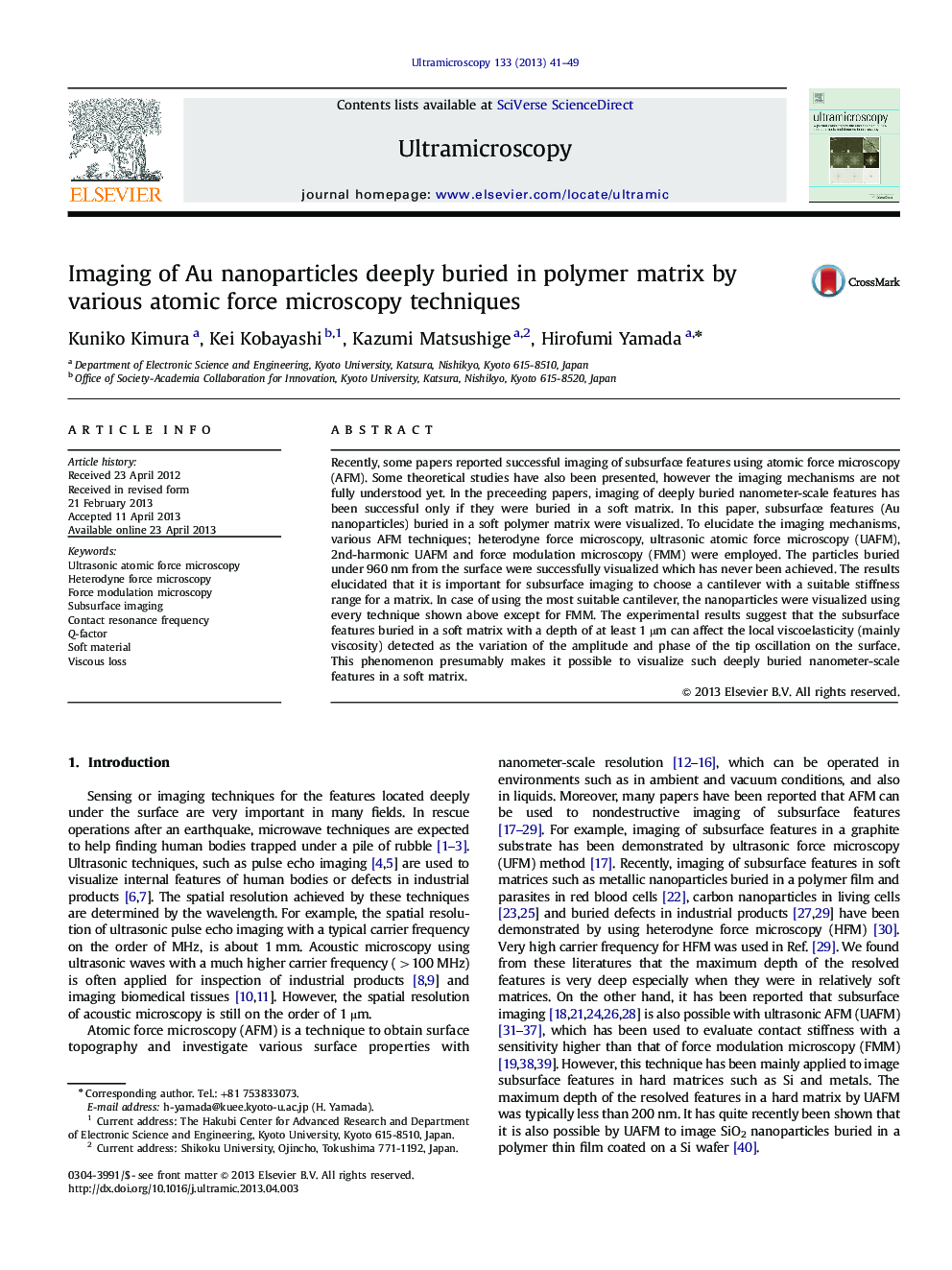| Article ID | Journal | Published Year | Pages | File Type |
|---|---|---|---|---|
| 8038497 | Ultramicroscopy | 2013 | 9 Pages |
Abstract
Recently, some papers reported successful imaging of subsurface features using atomic force microscopy (AFM). Some theoretical studies have also been presented, however the imaging mechanisms are not fully understood yet. In the preceeding papers, imaging of deeply buried nanometer-scale features has been successful only if they were buried in a soft matrix. In this paper, subsurface features (Au nanoparticles) buried in a soft polymer matrix were visualized. To elucidate the imaging mechanisms, various AFM techniques; heterodyne force microscopy, ultrasonic atomic force microscopy (UAFM), 2nd-harmonic UAFM and force modulation microscopy (FMM) were employed. The particles buried under 960 nm from the surface were successfully visualized which has never been achieved. The results elucidated that it is important for subsurface imaging to choose a cantilever with a suitable stiffness range for a matrix. In case of using the most suitable cantilever, the nanoparticles were visualized using every technique shown above except for FMM. The experimental results suggest that the subsurface features buried in a soft matrix with a depth of at least 1 µm can affect the local viscoelasticity (mainly viscosity) detected as the variation of the amplitude and phase of the tip oscillation on the surface. This phenomenon presumably makes it possible to visualize such deeply buried nanometer-scale features in a soft matrix.
Related Topics
Physical Sciences and Engineering
Materials Science
Nanotechnology
Authors
Kuniko Kimura, Kei Kobayashi, Kazumi Matsushige, Hirofumi Yamada,
